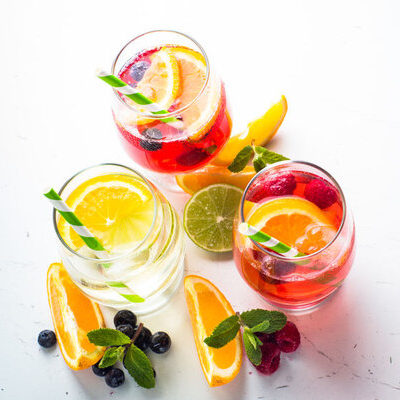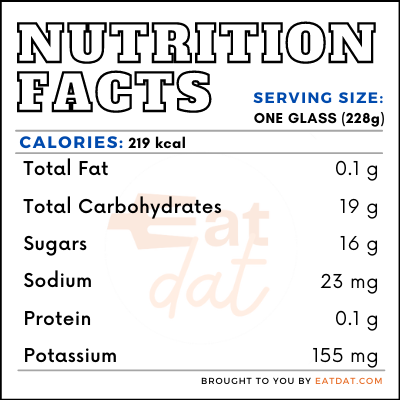
Sangria
What is Sangria?
Originating in Spain and Portugal, sangria is a cocktail made with red wine, sugar, and fruits such as apples, oranges, lemons, and peaches. Some varieties use white or rosé wine to give a twist to the classic drink, although the traditional recipe uses Tempranillo.
- Other beverages such as brandy or liqueurs may also be mixed in to create a stronger alcoholic drink.
- It is important to pick the right wine for making this cocktail.
Experts advise avoiding wines heavy on tannins and acidity and picking light, fruity wines that will complement the fruits added to the mix.
Vine Pair recommends the following wines for making this drink:
- Bodegas Torremoron Tempranillo Joven
- Bodegas “Breca” Garnacha Old Vines
- Torres Celeste Crianza
- Hahn Family Wines Grenache-Syrah-Mourvedre
- Tormaresca Torcicoda Primitivo
- Bodegas Arteca “Honoro Vera” Garnacha
- Matthiasson “Tendu” Red
Origin of sangria
This alcoholic drink originates from the Spanish word for ‘bloodletting’ and refers to the reddish color of the drink. This beverage goes a long way back in Mediterranean Europe. Ancient Greeks and Romans made an alcoholic drink with sugar, spices, and fruits called ‘hippocras’, from which this beverage is derived. Sangria was made in Spain from the vines planted by the Phoenicians around 1100 BC.
The conquest of Spain by Islamic dynasties put an end to the Spanish business, which lasted until 1492. This alcoholic beverage was also made in England and France using French grapes. In 1964, Spain featured sangria in the World’s Fair held in New York City, after which the drink became globally known.
Nutrition
The nutritional value for one glass of sangria:

It can have anywhere between 200 to 300 calories. The sugar, alcohol, and fruit mix make for high carbohydrate content. The fruits used provide fiber and multiple micronutrients. This beverage has a high amount of potassium, manganese, and vitamin C, as well as a number of nutrients in smaller quantities. Red wine contains antioxidants, polyphenols, and flavonoids, which are beneficial against aging, inflammation, and cancer. However, overconsumption and other alcoholic beverages may lead to health problems.
Commercial production
It is considered a punch. Furthermore, it is viewed as a drink popularized in Spain to attract tourists in the 1960s. Most restaurants that serve this drink add the fruit at the last minute, instead of soaking them. Each restaurant may also have their own recipe.
Nonetheless, basic sangria is made with wine, the fruits of your choice, and sugar. First, the sugar is dissolved in water over a low flame to create a syrup, which is allowed to cool. Then, the wine and sugar syrup is stirred together. Finally, minutely chopped up fruits are added and allowed to soak for at least two hours. Spices like cinnamon and cloves may also be added.
Sangria recipes
This drink can be adapted easily to make different varieties. Here are a few popular recipes:
- Traditional Red Sangria
- Strawberry Orange White Wine
- Ginger Ale and Green Apple
- Mixed Berry Drink
- Tropical Pineapple Coconut
- Holiday Spice
- Piña Colada Sangria
- Autumn Apple Sangria
- Sweet Tea Sangria
- Mango Berry Iced Tea
- 2-minute Sangria
FDA regulations
The TTB defines grape wine as wine produced by the normal alcoholic fermentation of grape juice. Grape wines may be further designated according to their content and production method. Sangria is defined as grape wine, usually red wine, with citrus flavors or juices. The FDA describes all fresh fruits as raw agricultural commodities and strictly regulates all aspects of their growing, harvesting, packing, and storage.
References
Cat Wolinski, 6 Questions About Sangria You Are Too Embarrassed to Ask, Vine Pair, https://vinepair.com/articles/sangria-questions-answers-guide/
Joe Roberts, Everything You Didn’t Know About Sangria, Food & Wine, https://www.foodandwine.com/drinks/everything-you-didnt-know-about-sangria
Is it time to rethink how much you drink? Harvard Health Publishing, Harvard Medical School, https://www.health.harvard.edu/heart-health/is-it-time-to-rethink-how-much-you-drink
